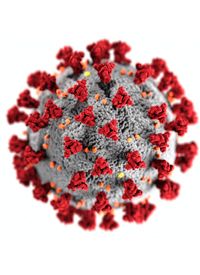COVID-19 in NY Patients With Cancer Is Marked by Substantial Hospitalization Rates, Poor Outcomes
Patients in New York City with cancer who are then diagnosed with novel coronavirus 2019 (COVID-19) are marked by substantial hospitalization rates and severe outcomes.

Patients with cancer who are then diagnosed with novel coronavirus 2019 (COVID-19) is marked by substantial hospitalization rates and severe outcomes, according to findings from a study out of Memorial Sloan Kettering Cancer Center.
As of April 10, 2020, patients with cancer comprised 8.4% of the 9385 reported COVID-19 deaths reported in New York. However, investigators noted a knowledge gap as to which aspects of cancer and corresponding treatment confers significant COVID-19 risks.
In the study, the authors stated that Memorial Sloan Kettering (MSK) Cancer Center tested 2035 patients with cancer between March 10 and April 7, 2020, 423 of which were diagnosed with symptomatic COVID-19.
Of this population, 40% were hospitalized for symptoms related to COVID-19, and 20% developed severe respiratory illness. Among those 20%, an additional 9% of patients required mechanical ventilation. Within 30 days, 12% of the total number of patients died.
Though patients with both cancer and COVID-19 have been associated with some pretty severe outcomes, it was found that factors such as metastatic disease and common therapies, such as chemotherapy and major surgeries had no significant association with hospitalization or severe respiratory illness. Immune checkpoint inhibitors, however, were found to have an association with negative outcomes, which MSK Cancer Center researchers stated they will further investigate in tumor-specific cohorts.
More than half of the patients (56%) were older than 60 years. Fifty-six percent of patients had metastatic solid tumors, which were cancers of the breast (20%), colon (9%), and lung (8%). The most common hematologic cancer was lymphoma (11%).
Comorbidities were reported among the study population, with 59% of patients reportedly having at least 1 comorbidity; these included diabetes, hypertension, chronic kidney disease, and cardiac disease.
Cough (82%) and fever (78%) were the most common presenting symptoms, with shortness of breath (44%) and diarrhea (26%) additionally reported.
A number of investigational therapies were administered during this timeframe in an effort to manage and treat COVID-19 symptoms: hydroxychloroquine (Plaquenil), azithromycin (Zithromax), remdesivir (Veklury), tocilizumab (Actemra), convalescent plasma, and corticosteroids. Over the course of the study, there were case fatalities at the hospital (24%) and the intensive care unit (35%).
Moreover, investigators examined hospitalization risk factors and severe respiratory illness, including the need for high-flow oxygen supplementation or mechanical ventilation. A multivariate analysis revealed that patients who were non-white, had hematologic malignancies, a chronic lymphopenia composite measure, corticosteroid use, and immune checkpoint inhibitor therapy were the most prevalent factors associated with hospitalization.
Immune checkpoint inhibitors, particularly PD-1 inhibitors, stood as a significant predictor of severe respiratory illness. A post hoc analysis in patients with lung cancer highlighted higher rates of hospitalization (non-checkpoint inhibitor, 52% vs checkpoint inhibitor, 83%) and severe respiratory illness (35% vs 58%, respectively) than in other solid cancers, which saw fewer hospitalizations (38% vs 47%) and cases of severe respiratory illness (15% vs 26%).
Investigators additionally evaluated predictors of clinical outcomes in 2 separate models, including symptoms and laboratory markers. Though fever, cough, onset dyspnea, and diarrhea were associated with an increased risk of hospitalization and severe respiratory illness, dyspnea and diarrhea were found to most significantly predict severe outcomes in patients with cancer. Laboratory biomarkers examined time-dependent predictors, such as procalcitonin, lymphopenia, interleukin-6, D-dimer and lactate dehydrogenase, all of which were linked to severe respiratory illness.
In a comparison of COVID-19 data within MSK Cancer Center with other COVID-19 cases across New York City, results showed that MSK had higher rates of hospitalization than the city’s general population. Case fatality rates in other institutions/organizations—COVID-19 and Cancer Consortium (CCC19; 13%) and Mount Sinai Hospital (11%) were similar to that of MSK (12%). United Kingdom Coronavirus Cancer Monitoring Project and Montefiore Medical Center both reported slightly higher fatality rates (28%); however, this could be potentially linked to the higher rate of elderly patients, as 36% of Montefiore patients who died had resided in nursing homes or shelters.
The investigators concluded that more aggressive testing and universal screening should help oncologists deliver safe care to their patients as clinical practices begin to reopen amid the ongoing COVID-19 pandemic.
Reference
Robilotti EV, Babady NE, Mead PA, et al. Determinants of COVID-19 disease severity in patients with cancer [published online ahead of print June 24, 2020]. Nat Med. doi: 10.1038/s41591-020-0979-0



